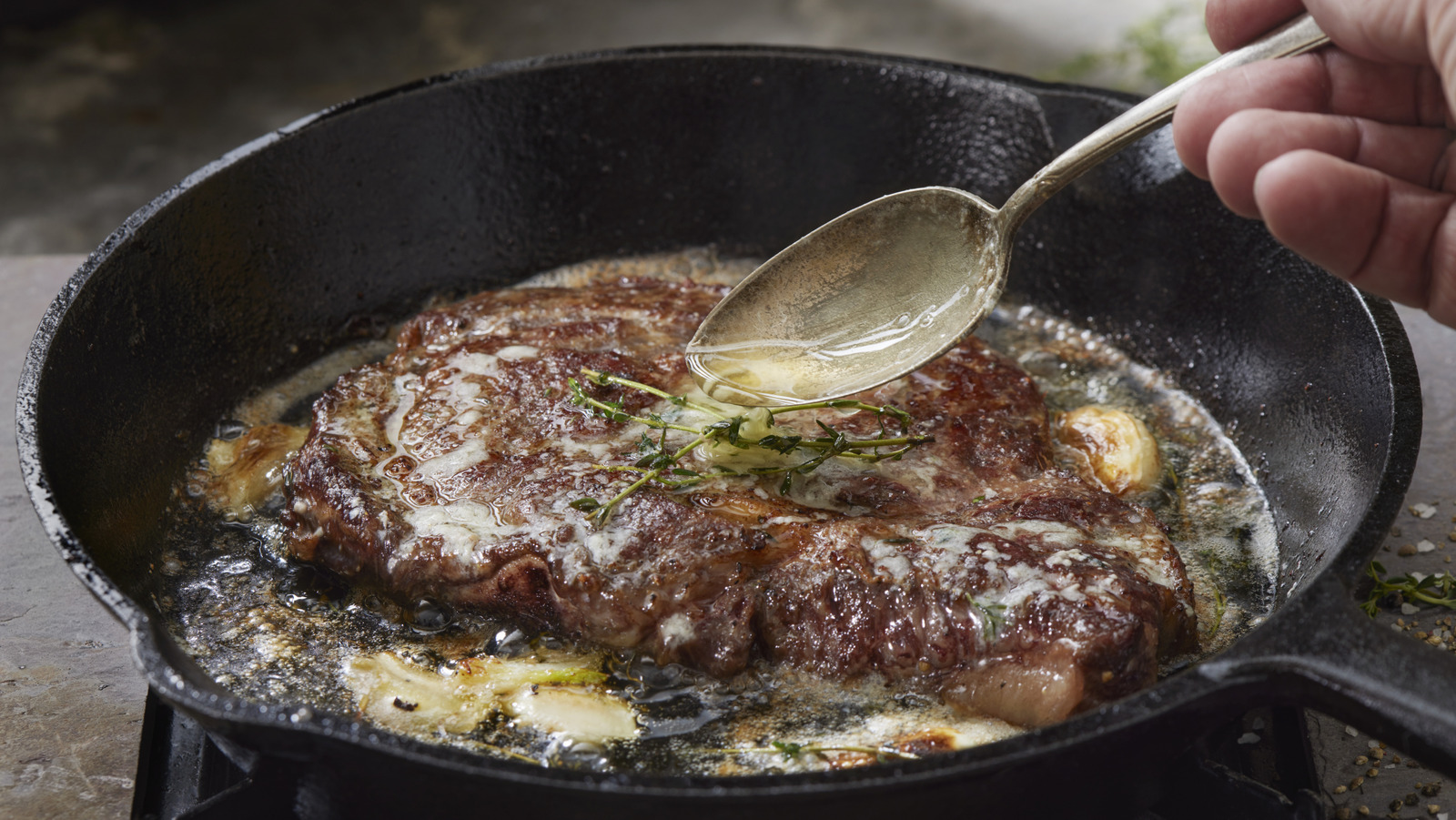There’s something particularly satisfying about basting a gorgeous, well-crusted steak in a cast iron pan with velvety, rich melted butter. Not solely reserved for red meat, butter-basting is key for the most tender and flavorful fish, and you can even baste vegetables with butter for a silky sauce. Whether it’s the soothing repetitive action of the spoon moving in a circular motion or the luscious coating of fat surrounding the meat, it always pays to baste your steak with butter, but knowing what kind of butter to use can be tricky. We spoke with Douglas Keane, chef and partner at Cyrus, a Michelin-starred restaurant in Geyserville, California, about making the most of basting meat with butter.
Keane says that when it comes to butter-basting meat, “quality always matters. The better an ingredient tastes the dish that it is making will taste better.” While striving for the best quality ingredients possible, Keane is also a realist, saying that “cooking is about reality and compromising at times. So it’s not practical to always use cultured butter in your cooking.” If you’re unfamiliar with the difference between sweet cream and cultured butter, cultured butter uses cream that’s had a live bacteria culture added to it, similar to the bacteria cultures used to make cheeses and yogurts, and has been fermented for no less than 24 hours before being churned into butter. The resulting butter has a bit of a pleasant, tangy flavor as well as a lovely, rich mouthfeel thanks to the higher percentages of butterfat usually found in cultured butter.
Cultured butter has the best flavor, but don’t fret if you have to use regular butter
While we’d love to live in a world where cultured butter is the only kind of butter we keep in our refrigerator, it is an expensive product that isn’t accessible or available to everyone, and chef Douglas Keane agrees. “So don’t stress about it,” he says. “Buy the best products you can afford and work with them,” advises Keane. When searching for a good butter to baste with, keep an eye out for the butterfat percentages on the labels, as American butters usually contain less fat than European butters. “Some of the fat contents in butter will affect its practicality in butter-basting,” notes Keane.
“The higher the fat content the less water there is when the butter melts and the frothiness of the basting will be different,” Keane explains, as both the quality and fat content of the butter affect the result. A higher fat content, which therefore has a lower water content, will be less prone to splattering in the pan as well, as the water in butter creates scalding hot steam when heated that can lead to painful pops of fat and moisture jumping out of the pan. Take a peek at the common mistakes you’re making when butter-basting before making your next steak at home, so you’re better equipped to put that fancy cultured butter to proper use.






